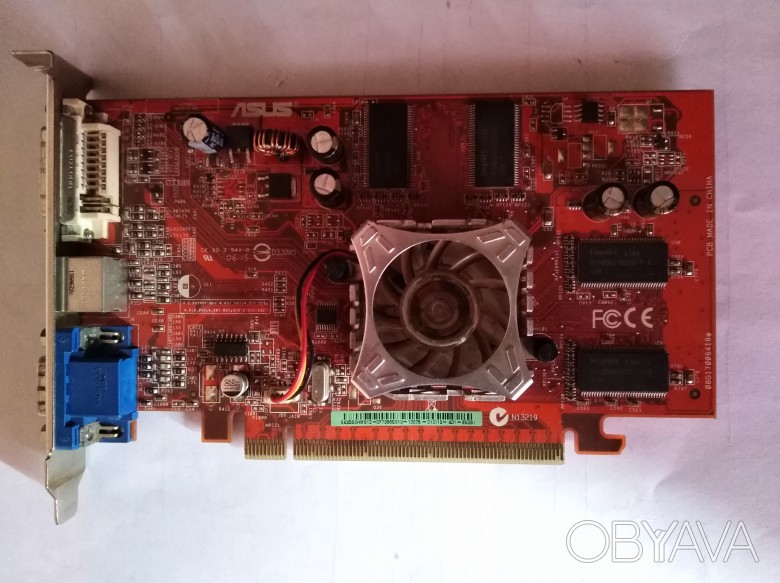

- #Radeon radeon x300 x550 x1050 series full
- #Radeon radeon x300 x550 x1050 series pro
- #Radeon radeon x300 x550 x1050 series code
- #Radeon radeon x300 x550 x1050 series professional
- #Radeon radeon x300 x550 x1050 series series
DirectX 9.0 specified FP24 as a minimum level for conforming to the specification for full precision. A noteworthy limitation is that all R300-generation chips were designed for a maximum floating point precision of 96-bit, or FP24, instead of DirectX 9's maximum of 128-bit FP32. The demo was a real-time implementation of noted 3D graphics researcher Paul Debevec's paper on the topic of high dynamic range rendering. Equipped with 4 vertex shader units, R300 possessed over twice the geometry processing capability of the preceding Radeon 8500 and the GeForce4 Ti 4600, in addition to the greater feature-set offered compared to DirectX 8 shaders.ĪTI demonstrated part of what was capable with pixel shader PS2.0 with their Rendering with Natural Light demo. This was part of the new DirectX 9 specification, along with more flexible floating-point-based Shader Model 2.0+ pixel shaders and vertex shaders. The textures can be any combination of one, two, or three dimensions with bilinear, trilinear, or anisotropic filtering. Its texture units could perform a new loopback operation which allowed them to sample up to 16 textures per geometry pass. While this differed from the older chips using 2 (or 3 for the original Radeon) texture units per pipeline, this did not mean R300 could not perform multi-texturing as efficiently as older chips. The chip adopted an architecture consisting of 8 pixel pipelines, each with 1 texture mapping unit (an 8x1 design).

#Radeon radeon x300 x550 x1050 series pro
Despite that, the Radeon 9700 PRO was clocked significantly higher than the Matrox Parhelia 512, a card released but months before R300 and considered to be the pinnacle of graphics chip manufacturing (with 80 million transistors at 220 MHz), up until R300's arrival. A slower chip, the 9700, was launched a few months later, differing only by lower core and memory speeds. With a transistor count of 110 million, it was the largest and most complex GPU of the time. Radeon 9700 PRO was launched clocked at 325 MHz, ahead of the originally projected 300 MHz. ATI thus could achieve higher clock speeds. Flip chip packaging allows far better cooling of the die by flipping it and exposing it directly to the cooling solution. One major change with the manufacturing of the core was the use of the flip-chip packaging, a technology not used previously on video cards. However, refined design and manufacturing techniques enabled a doubling of transistor count and a significant clock speed gain. The core of 9700 PRO was manufactured on a 150 nm chip fabrication process, similar to the Radeon 8500. The architecture of R300 was quite different from its predecessor, Radeon 8500 ( R200), in nearly every way.
#Radeon radeon x300 x550 x1050 series code
The R3xx chip was designed by ATI's West Coast team (formerly ArtX Inc.), and the first product to use it was the Radeon 9700 PRO (internal ATI code name: R300 internal ArtX codename: Khan), launched in August 2002. The R300, with its next-generation architecture giving it unprecedented features and performance, would have been superior to any R250 refresh.

This proved to be a wise move, as it enabled ATI to take the lead in development for the first time instead of trailing NVIDIA. ATI, perhaps mindful of what had happened to 3dfx when they took focus off their Rampage processor, abandoned it in favor of finishing off their next-generation R300 card. Pre-release information listed a 300 MHz core and RAM clock speed for the R250 chip. A new high-end refresh part, the 8500XT (R250) was supposedly in the works, ready to compete against NVIDIA's high-end offerings, particularly the top line Ti 4600. The integrated graphics processor based upon R300 is the Xpress 200.ĪTI had held the lead for a while with the Radeon 8500 but Nvidia retook the performance crown with the launch of the GeForce 4 Ti line.
#Radeon radeon x300 x550 x1050 series professional
R300 and its derivatives would form the basis for ATI's consumer and professional product lines for over 3 years. It was the first time that ATI marketed its GPU as a Visual Processing Unit (VPU). The first graphics cards using the R300 to be released were the Radeon 9700. The processors also include 2D GUI acceleration, video acceleration, and multiple display outputs. R300 was the first fully Direct3D 9-capable consumer graphics chip. This GPU features 3D acceleration based upon Direct3D 9.0 and OpenGL 2.0, a major improvement in features and performance compared to the preceding R200 design. The R300 GPU, introduced in August 2002 and developed by ATI Technologies, is its third generation of GPU used in Radeon graphics cards.
#Radeon radeon x300 x550 x1050 series series
Series of video cards ATi Radeon 9000/X300/X500/X600 series


 0 kommentar(er)
0 kommentar(er)
